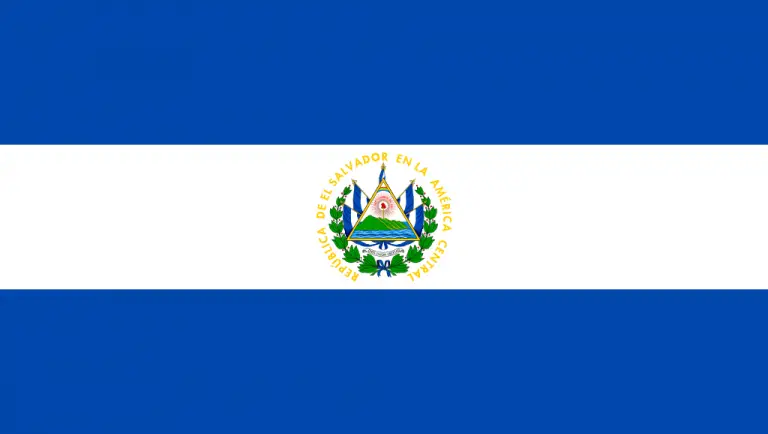
El Salvador, officially called the Republic of El Salvador, is a country located in the central region of North America.
El Salvador is Central America’s smallest and most densely populated country.
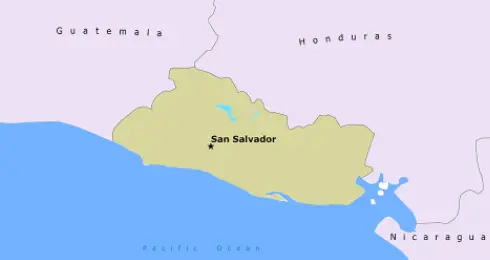
SHORT FACTS ON EL SALVADOR !!!
- OFFICIAL NAME = REPUBLIC OF EL SALVADOR
- NATIONALITY = SALVADORAN(S)
- CAPITAL = SAN SALVADOR
- CONTINENT = NORTH AMERICA
- OFFICIAL LANGUAGE = SPANISH
- POPULATION = 6.45 MILLION
- CURRENCY = U.S DOLLARS
- AREA = 21,041 SQ KM (8,124 SQ MILES)
- CLIMATE = TROPICAL CLIMATE (HOT AND HUMID)
- CALLING CODE = DIAL 011+503+PHONE NUMBER
- DRIVES ON = RIGHT HAND SIDE OF THE ROAD
- HIGHEST POINT = MOUNT CERRO EL PITAL: 2,730 METERS (8,957 FEET)
- MAJOR MOUNTAINS = SANTA ANA VOLCANO AND CERRO EL PITAL
- MAJOR RIVERS = GOASCORAN, JIBOA AND TOROLA
- RELIGION = MAINLY CHRISTIAN (CATHOLIC, EVANGELICAL PROTESTANTISM)
- INDEPENDENCE = 15th SEPTEMBER, 1821 (FROM SPAIN)
- NATIONAL HOLIDAY = INDEPENDENCE DAY: 15th SEPTEMBER
- NATIONAL SYMBOL = COAT OF ARMS
- GOVERNMENT = UNITARY PRESIDENTIAL CONSTITUTIONAL REPUBLIC
- NATIONAL SPORT = FOOTBALL (SOCCER)
- NATURAL RESOURCES = ARABLE LAND, WATER BODIES, GOLD, IRON AND PETROLEUM
- MAJOR INDUSTRIES = CHEMICALS, FERTILIZER, TEXTILES, FURNITURE AND PETROLEUM
- AGRICULTURE = COFFEE, SUGAR, CORN, RICE, BEANS, COTTON, BEEF AND DAIRY PRODUCTS.
A BRIEF HISTORY OF EL SALVADOR !!!
Before the Spanish conquest, present-day El Salvador was inhabited by the Olmecs, the Maya, and the Toltec Empire.
When the Spanish conquerors arrived in 1524, the indigenous inhabitants, the Pipils, or the Pipiles, were the dominant group in the region.
The Spanish led by Pedro de Alvarado met determined opposition from the Pipils, before they permanently established a colony in 1540.
Throughout the 1700’s, agriculture soared thanks to the enslaved indigenous people, who were forced to work the land.
In 1811, a priest called Father José Matías Delgado led a rebellion against the Spanish forces, but it was quickly quelled.
On Sept 15th, 1821, El Salvador achieved independence from Spain, along with the rest of the Central American colonies.
In 1823, El Salvador joined the United Provinces of Central America, which also included Costa Rica, Honduras, Guatemala, and Nicaragua.
After a few years of turmoil, the United Provinces of Central America was dissolved, leading to El Salvador issuing a second declaration of independence in 1840.
Between 1980 to 1992, El Salvador was caught up in a Civil War which killed more than 70,000 people. It involved guerrilla troops against the government forces, who also had the backing from the United States, over the conditions they lived in.
The bloody war lasted 12 years, until the president of El Salvador and ten guerrilla leaders sat down and signed a peace treaty with the El Salvadoran government. Since that day in 1992, things have slowly changed for the better, although there is still a lot of poverty in the country.
INTERESTING FACTS ON EL SALVADOR !!!
El Salvador is bordered by Honduras to the north and east, by Guatemala to the northwest, and the Pacific Ocean to the south.
El Salvador is the only country in Central America without a Caribbean coastline.
El Salvador sits on the Pacific Ring of Fire, a massive area in the Pacific Ocean where many Earthquakes and Volcanoes occur.
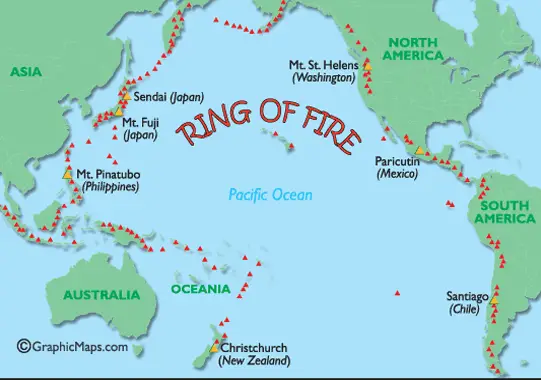
El Salvador is known as the Land of Volcanoes.
Out of the 20 volcanoes located in El Salvador, only 5 of them are still active.
Not one, but two major earthquakes struck El Salvador in January and February of 2001, resulting in more than 1,200 deaths, 9000 injuries and leaving more than 1.6 million people homeless. The whole infrastructure of the country was severely damaged.
El Salvador was named after the Spanish word for “The Savior,” in honor of Jesus Christ.
The capital city of El Salvador is San Salvador. It is around 658 meters (2,159 ft) above sea level.
The Cerro El Pital, is the tallest mountain in El Salvador, with a height of 2,730 meters (8956 ft).
The longest river in El Salvador is the Lempa River, which covers a distance of 422 km (262 miles).
The shoreline of El Salvador along the Pacific Ocean stretches a length of 307 km (190 miles), and is regarded as a paradise for surfers.
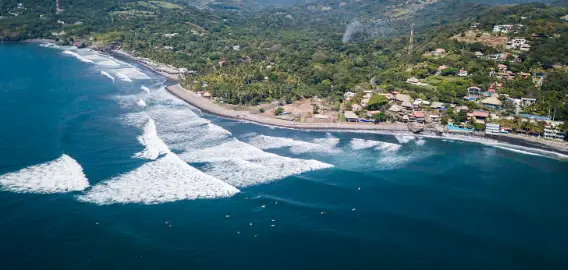
The national symbol of El Salvador is the turquoise-browned motmot (bird).
Four species of sea turtles make the coasts of El Salvador their home.
The most common dishes in El Salvador is Pupusa and Loroco. The Tamales is also a popular snack, which consists of corn dumplings wrapped in banana leaves.
Coffee beans are a major crop grown here.
Around half of the population of all Salvadorans live in poverty in the countryside. They have no running water or electricity in their homes, while the wealthy all live in the capital city of San Salvador in apartments and houses.
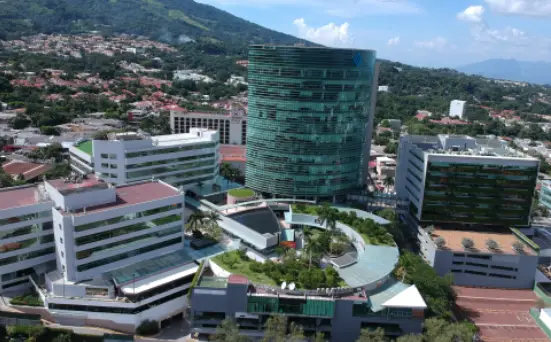
In El Salvador today, 4% of the people own 60% of the land, and 40% of people living in rural areas own no land at all.
While the government of El Salvador has reduced unemployment, especially in the manufacturing industry, it also faces bigger challenges with poverty, crime and natural disasters.
During the 1969 World Cup qualifying football match between El Salvador and Honduras, the El Salvador government decided to invade Honduras and bomb their airports. Luckily enough this war only lasted less than 100 hours.
If you decide to go to El Salvador and decide to use their buses, you could end up sharing your seat with a chicken or a pig. This is because the locals use the buses to transport their livestock. Tourists call them “chicken buses”.
Salvadorans are known as “guanacos.”
Salvadorans are extremely friendly, warm and welcoming to tourists.
The literacy rate in El Salvador is 89% and the life expectancy is 73 years.





